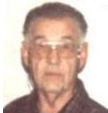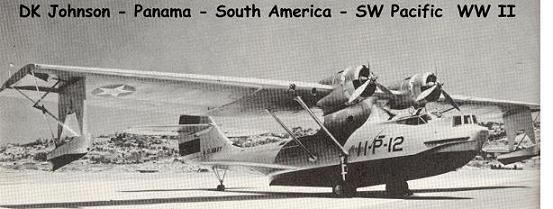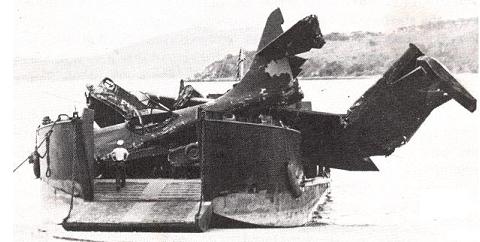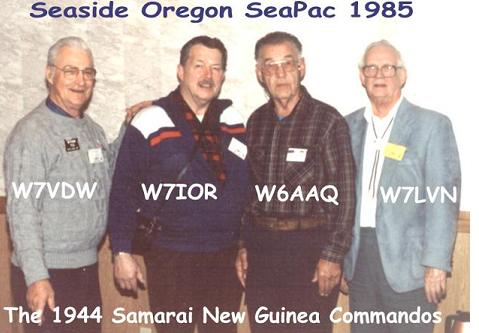
|
Donald K. Johnson Esparto, CA QCWA # 21832 |
"Mr. Screwdriver" W6AAQ, a Silent Key
Don Johnson, W6AAQ, inventor of the screwdriver mobile antenna died Wednesday, April 14th according to his son Don Jr. He had been ill for several months and died in a hospital. I have no further details regarding his illness. Don lived in Esparto, a small community in Northern California west of Sacramento.
He will be buried with full military honors at the National Cemetery in Dixon, California. A memorial service will be held in July.
When the FCC first authorized HF mobile, a group of us in the SF Bay area decided to go mobile on 75 meters. We chose 3995 Khz (then MHz) as an operating frequency to reduce the possibility of high power fixed stations interferring. We conducted field tests with our home brewed antennas using a field strength meter to see who had the strongest signal. Don came up with the idea of using a metal tube with a whip on top of a coil that fit inside the tube. By raising and lowering the coil a resonant point could be found. He was searching for a method of tuning the antenna remotely when W6MHP, Denny (sk), suggested using the motor from a cordless screwdriver. Thus the "screwdriver mobile antenna" was born. Don received a patent on the device and built and sold thousands. In his words "Plus thousands that were sold by shamelsss bootleggers".
Don was a retured navy radioman and pilot. He once told me that he had spent 30 years in the navy and never served aboard a ship. For a time, while in the navy, he flew three round trips weekly between San Francisco and Honolulu on MARS seaplanes.
My wife and I attended Don's 91st birthday party last July. You will be greatly missed old friend but may you rest in piece......Al Melcher, W6ARM.
Amazing Story. Navy Plane Down At Sea For 8 Days
1000 Miles West of Panama First weeks of WW II
Radio Amateur Crew Members Responsible for Saving Entire Crew - by DK [Don] Johnson #21832 W6AAQ USN Aviation Ret
Background re communications situation at Fleet Air Wing Three Panama at beginning of WW II
The Military was expanding so fast the couple of years preceding WW II every ship and station was frightfully short of experienced personnel. When the war began our communications office at the Fleet Air Wing 3 Flag, Coco Solo CZ was so short of experienced men that we had to set men on circuits who could just barely recognize our radio call sign after it was repeated a few times -- then they would alert a qualified operator if one was available.
In our entire crew we had an old time CPO in charge of the division and a couple of career radioman. I had been a commercial radio operator and a licensed Amateur Radio Operator before enlisting. Also aboard was a newly arrived Reserve, Seaman Harvey, who was also a Radio Amateur.. The Chief, Harvey, one 2nd class and I were the only experienced high speed operators in the division. The administrative duties of the Chief in charge left only three of us available for the heavy traffic circuits. To further cut down on the crew, the 2nd class wound up for an extended stay in sick bay with a severe case of the popular local social disease. We had to work our watches out so there would be at least one of us in the office at all times; we did not see much of our barracks or bunks.
At the start of the war every available plane was dispatched to patrol both the Pacific and Caribbean approaches to the Canal. The patrols were long and were in the air night and day. Plane # 11 of VP- 31 missing. On 9 January 1942 PBY 31P11 did not return from patrol. After the routine 1100 position report nothing was heard from that plane the rest of day. The aircraft had not returned after it had out-stayed the amount of fuel aboard. It had to be assumed the plane was missing. Since there had been no communications there wasn't any clue whatsoever as to the trouble. Massive search set in action. Continuous split phone watches were set up on three of the assigned aircraft frequencies.. Day after day we did not hear a thing. Every plane and crew which could be spared was sent into the last known possible area to search and listen on the wireless. Help from the Sea-Going Navy. Three cruisers and three destroyers from San Diego were about 1000 miles west of Panama on the way to the Canal. They were instructed to conduct daily searches. The three cruisers were the USS Trenton, USS Concord and USS Richmond -- plus the 3 destroyers.
News ! News ! News !
On the fifth night, somewhere around mid-night I was roused from my bunk at the back of the office. Harvey had stayed in the office after his regular watch and turned on a spare receiver tuning back and forth around 8530kcs. (Hertz hadn't been invented yet!) Harvey picked up the CW SOS call of the lost plane and replied to them before sending for me. He had told them to standby and was continually sending V's on our transmitter so the aircraft crew would know we were still on the air.
Now things started to jump on the mid-watch. The Wing operations officer was immediately on the scene. A message was sent to the downed plane requesting their status and estimated position. We learned the plane had made a forced landing at noon on the 9th from an altitude of 400 feet where they were patrolling under an overcast. Also they indicated they were on emergency equipment and short of power. The operations officer instructed them to shut down and check in with us again at 0900 and look for us also at 1200 when they would receive detailed instructions, however we would maintain a continuous watch on their frequency in case of any other emergency.
 Aircraft SOS was heard by a Radio Amateur in Pennsylvania.
Aircraft SOS was heard by a Radio Amateur in Pennsylvania.
As we were communicating with the aircraft, our teletype to the 15th Naval District started clanging out an urgent message. A Radio Amateur in Pennsylvania had been tuning around the radio spectrum in the middle of the night and also heard the initial SOS from the downed plane. He had alerted the U.S. Coast Guard and the information was in Panama within the hour. That was very remarkable considering the odds during these early communications difficulties
Instructions to the downed aircraft The plane had been down at sea for 5+ days in heavy winds and seas and strong ocean currents so the best educated guesses were; the position is in the Pacific probably about 6 hours, PBY flying time, west of Panama. So on the 1200 schedule on the 6th day our instructions to the crew were.
THIS EVENING JUST BEFORE THE TOP RIM OF THE SUN DROPS BELOW THE HORIZON HOLD DOWN YOUR TRANSMITTER KEY AND THE EXACT INSTANT THE SUN DISAPPEARS LET UP ON THE KEY. All searching craft on the circuit were passed this information. With the sun line, the longitude could be very accurately determined, however, a guess would have to be made as to the latitude.
First attempt failed At sunset the arranged signal was sent. Working it out on the chart showed an impossible longitude. It was assumed that perhaps in the rough seas or overcast the exact rim of the sun could not be seen - if visible at all. The downed crew was instructed to repeat the signal at sunrise and again the next evening. The signal was not heard in the morning but that evening the signal resulted in a very plausible reading.. The cruisers had been launching search planes everyday and on the 8th day they searched the area along the indicated longitude. Just before sundown at 1700 the PBY was sighted about 1200 miles off the coast by a search plane from the USS Trenton.
Rescued on the 8th day
By 2200 that night the crew was safely aboard the rescue ship. The plane was taken in tow by one of the tin cans but due to the heavy seas it sank a couple of days later and never made it back to Panama..
Two of the crew members were Radio Amateurs plus one other Navy Radioman The crew members were Lt William P Sutherland USN pilot; Ensign William J Lahodney USNR 2nd pilot Laverne L Weiss Radioman, first class, was an enlisted Naval Aviation Pilot. Harold C Martin Seaman first class; Jesse W Miller Aviation Machinist second class; John P Carlson Radioman second class; William B Valyou Radioman third class.
Living on the plane in the middle of ocean with no communications. From the moment of the crash landing the crew of the plane went on rations.
A still was improvised by Ensign Lahodney and two men were kept on the job distilling water at the rate of one fourth pint a day. Sometimes a wave would wash over the plane and what water had been distilled would be lost.
Food averaged about three quarters of a can per day per man. The labels were washed off the cans, but in about two days the men became near experts in guessing their contents by shaking them. Lack of sleep was the main difficulty. Each man averaged about two or three hours sleep each night. They slept on top of the wing, sheltered beside inflated rubber rafts to lessen the discomfort of high winds. To prevent severe sun burning the men were fully clothed during the day and kept their clothing soaked. At night it was very cold. During the 8 1/2 days the crew each lost an average of 12 pounds.
How did they manage to get out the. SOS
Now we are ready to talk about the SOS. When the plane went down, the hull was sprung enough to permit the fuselage to fill up waist deep with sea water. The undamaged hull area was isolated by the water tight hatches between the compartments. The auxiliary power plant / generator was under water as well as the batteries and radio equipment. The batteries on that model PBY were under the radioman's chair. Later model planes placed the batteries high up in the wing.
The crew would normally carry only two radio operators, however, on this flight, additionally, one of the pilots, Weiss, was a Navy Radioman and also a pre war Radio Amateur. Radioman . Valyou was the 2nd Radio Amateur aboard. Both those men had built their own transmitting and receiving equipment used at their respective amateur radio stations before enlisting. And of course Carlson was an old timer Navy Radioman.
Now to build a radio station practically from scratch.
The men started removing the equipment from the water, disassembling and reassembling it to get it in workable condition. Remember - the aircraft was waist deep with water while outside wind blown mists and waves would crash over the craft When the equipment was disassembled every bit had to be thoroughly cleaned and dried. The slightest trace of any salt residue would have resulted in instant incineration when power was applied.
In addition to the radio gear, the auxiliary power plant had to be removed from the flooded compartment and moved up on the wing where it was found that the generator was inoperable. This required removing one of the aircraft engine generators and coupling it to the putt-putt. Knowing those facts it is easy to understand why it took 5 1/2 days to set up to transmit a SOS.
Any endless number of things
could have resulted in complete failure... Danger of dropping tools over the side or a miss step in hanging out over the wing removing the generator were some of the hazards.. Just think of the sweaty palms and white knuckles the first time the transmitting key was closed!
Getting on or near a frequency where someone would be listening; that in itself is often difficult to do in the benign environment of the home ham shack.
Embracing Radioman Harvey
When the crew returned to Coco Solo --The first thing they did was to search out Seaman Harvey who had responded within seconds to their first SOS call.
 Lahodney felt no pain a couple of years later we a saw Lahodney at a Navy Seaplane Facility on Palm Island off the east coast of Australia near Townsville. He made news again. During a dull period he and couple of his crew stripped the interior of a PBY and went out and did a loop. The loop was completed When they landed in the water and started to taxi back to the ramp, the plane came all unglued. Really! It broke up into several pieces. A picture of the wrecked plane can be seen on page 137 of Richard C Knott's book
Lahodney felt no pain a couple of years later we a saw Lahodney at a Navy Seaplane Facility on Palm Island off the east coast of Australia near Townsville. He made news again. During a dull period he and couple of his crew stripped the interior of a PBY and went out and did a loop. The loop was completed When they landed in the water and started to taxi back to the ramp, the plane came all unglued. Really! It broke up into several pieces. A picture of the wrecked plane can be seen on page 137 of Richard C Knott's book
BLACK CAT RAIDERS OF WW II ISBN 0-933852-18-5 No mention was made of the cause of the wreckage.
Ensign Lahodney went on to attain the rank of Naval Captain. Another case of "Mum's the Word" !
Rerun About 50 years after this incident ------- One morning I was talking with our regular group of Radio Amateurs who had been meeting early mornings for a number of years; I made a comment about my shipmates rescue in January 1942.
Pete, W6RAS(sk), one of the QCWA group, questioned me about it. What do you know about that! Sure enough, we determined that in 1942 he and I had been communicating on Navy CW circuits during this search and rescue mission. He was the radioman on the search circuit aboard the USS Trenton and I was operating from the Coco Solo Operations / Com Office.
Would you believe this !
In the late 1960's I operated an electronics plant, -- a big heavy set sales/executive visited my office, presumably on business. During our meeting we got into a Navy discussion discovering he had been the very young small trim Radioman Striker who had been assigned to watch the circuits, knowing just enough CW to identify our call. His duties were to wake me up to man the traffic, -- bring sandwiches and drinks in addition to other office 'go-fer' chores. During one eight day period I never got to the barracks. I often think of those young fellows, sitting in that small operating cubicle with a disgustingly ripe and smelly older sailor. Of course, I did not bring that up!
Poor devils !
Some added Trivia by Chuck Walbridge K1IGD

Ted Hiatt W7VDW Eugene Fischer W7IOR Don Johnson W6AAQ Jim Walsh W7LVN
These Dudes Shipmates during period of PBY crew rescue Jan 1942.
1. 1940 Hiatt assigned Fleet Air Wing 3 Com office Panama 02-21-21O
Johnson's brother W9WMX, still in High School, mailed list
of several Minnesota girls interested in US Navy Pen Pals.
Names passed out in Johnson's white hat. Hiatt married his draw.
March 2009 celebrated their 66 year of marriage.
2. 1940 Fischer in same a/c wing flying in PBYs. 07-30-21 sk 03-01-05
3. 1940 Johnson assigned Fleet Air Wing 3 Com office Panama 07-12-18
4.. 1943 Walsh wiggled into our PBY Flying boat squadron 10-18-21 sk 09-04-04
The 4 remained together with the PBY Black Cats during 2 year + run all the way from Perth Australia to Japan.
All remained close friends through years after the war. Frequent extended visits to each others homes thru Washington, Oregon & California.
Our family's last personal visit in Eugene Oregon with Jim Walsh was in March 2003 shortly before he retired as QCWA General Manager. Health. Jim wearing plumbing to his nose.
At a Seaside Oregon Annual Swap Meet, Jim & AAQ had Ray Myers sign up Ted Hiatt and Eugene Fischer Jim and I paying their 1st years dues. Neither renewed.
+ + + +
QCWA W6AAQ continuously licensed since 1935. Spouse Letha QCWA W6HMD continuously since